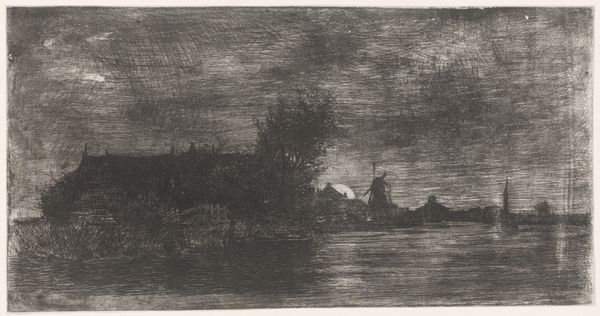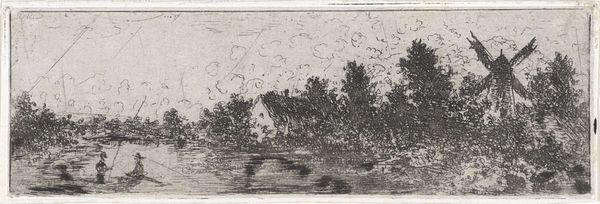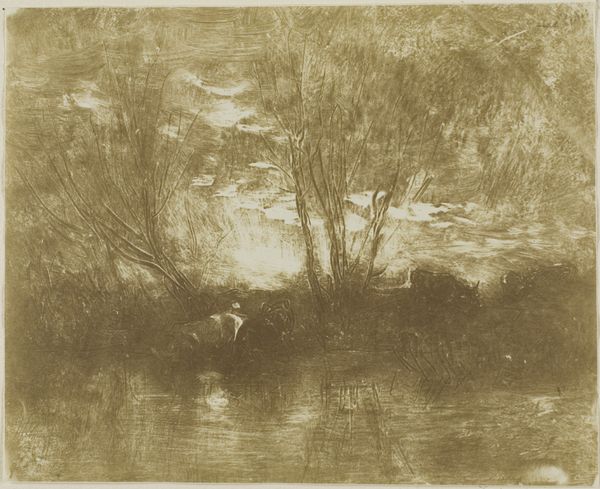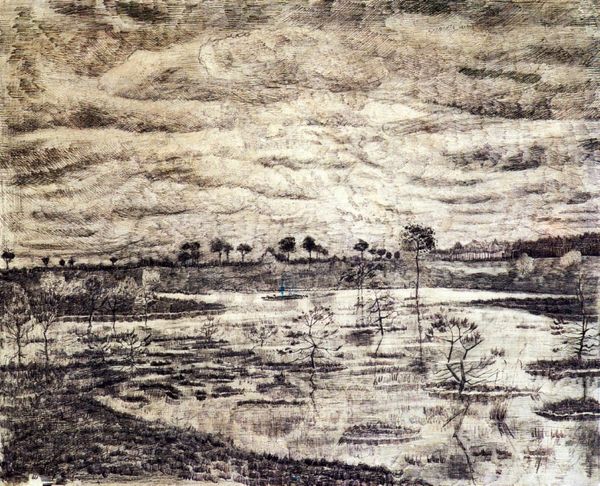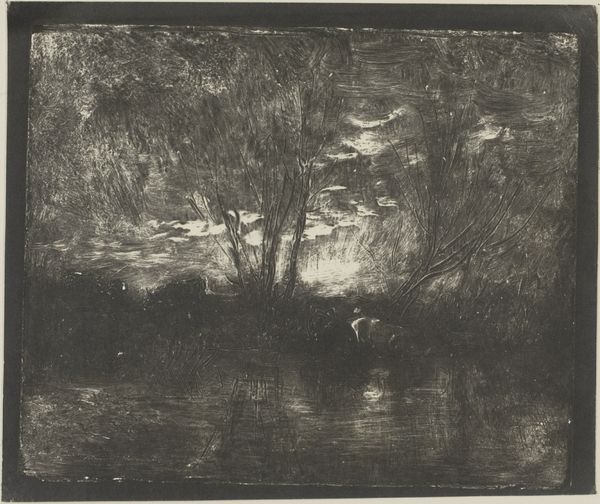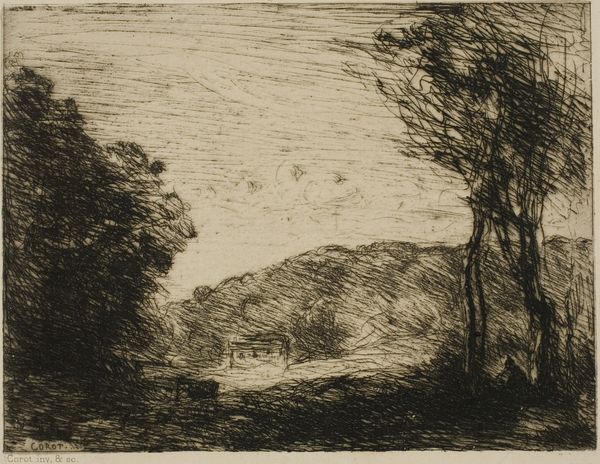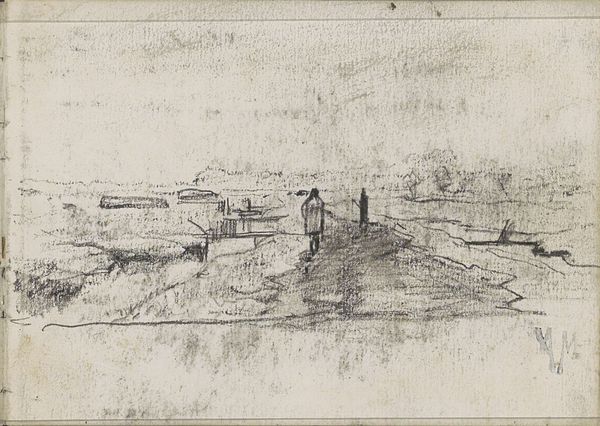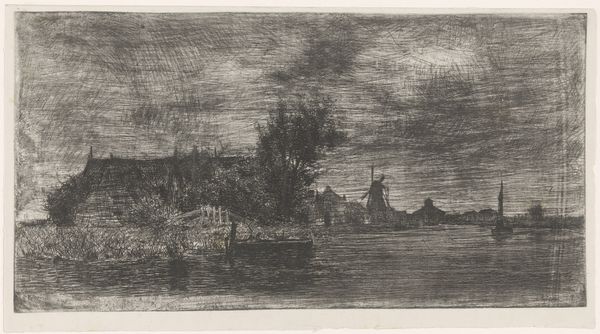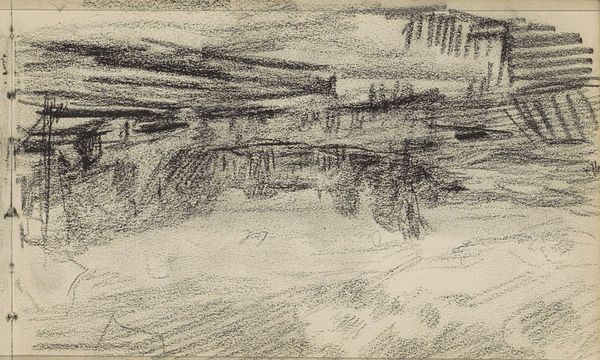
Dimensions: height 114 mm, width 159 mm
Copyright: Rijks Museum: Open Domain
Curator: Before us, we have Willem Cornelis Rip’s “River Landscape with Mills and Houses by a Water's Edge,” created in 1907. Editor: It feels immediately melancholic, doesn’t it? The charcoal gives everything a muted, almost dreamlike quality. The dense hatching builds a sense of gloom, shrouding what would likely have been very mundane, quotidian things like houses and mills. Curator: The choice of charcoal here is incredibly interesting, particularly given Rip’s wider body of work. It's a relatively inexpensive material. You wonder, was this sketch intended as preparation for a painting or as a piece in its own right? It demonstrates his working method. Editor: Windmills often symbolize industry and prosperity, but here, partially obscured, they evoke a sense of decay or at least something passing from the old to new—a world moving on, perhaps. Curator: Look at the labor involved. Rip renders such density with a network of hatched marks. The drawing teeters between the recognizable forms of the landscape with a house on the water and these heavy atmospheric blocks of black and grey charcoal smudging. Editor: The reflection in the water adds another layer of symbolic weight. Mirrors and water are so often seen in art, hinting at self-reflection or transformation. This dark mirroring here casts a shadow of everything above, making it seem as if the solid structures might just dissolve. Curator: Perhaps Rip valued process as a method to investigate and discover new subjects that might materialize through laboring? A tangible feeling exists here—something emerging—between representation and its imminent dispersal into sheer texture. The charcoal speaks of potential and transience. Editor: It seems this piece holds so much emotion. These aren’t mere windmills or a generic river but symbols of something larger: change, time, and the fleeting nature of our perceived realities. Curator: Right, and focusing on the “fleeting” part—perhaps this reflects on the ready availability of drawing materials, like charcoal, that render it possible for anyone to capture moments quickly. Editor: Ultimately, Rip offers us a somber yet reflective observation of change—on both a physical and an intangible, spiritual plane. Curator: A quiet testament to the artist's craft but also an economic approach to it in terms of material engagement and output that opens up possibilities rather than closing them.
Comments
No comments
Be the first to comment and join the conversation on the ultimate creative platform.
